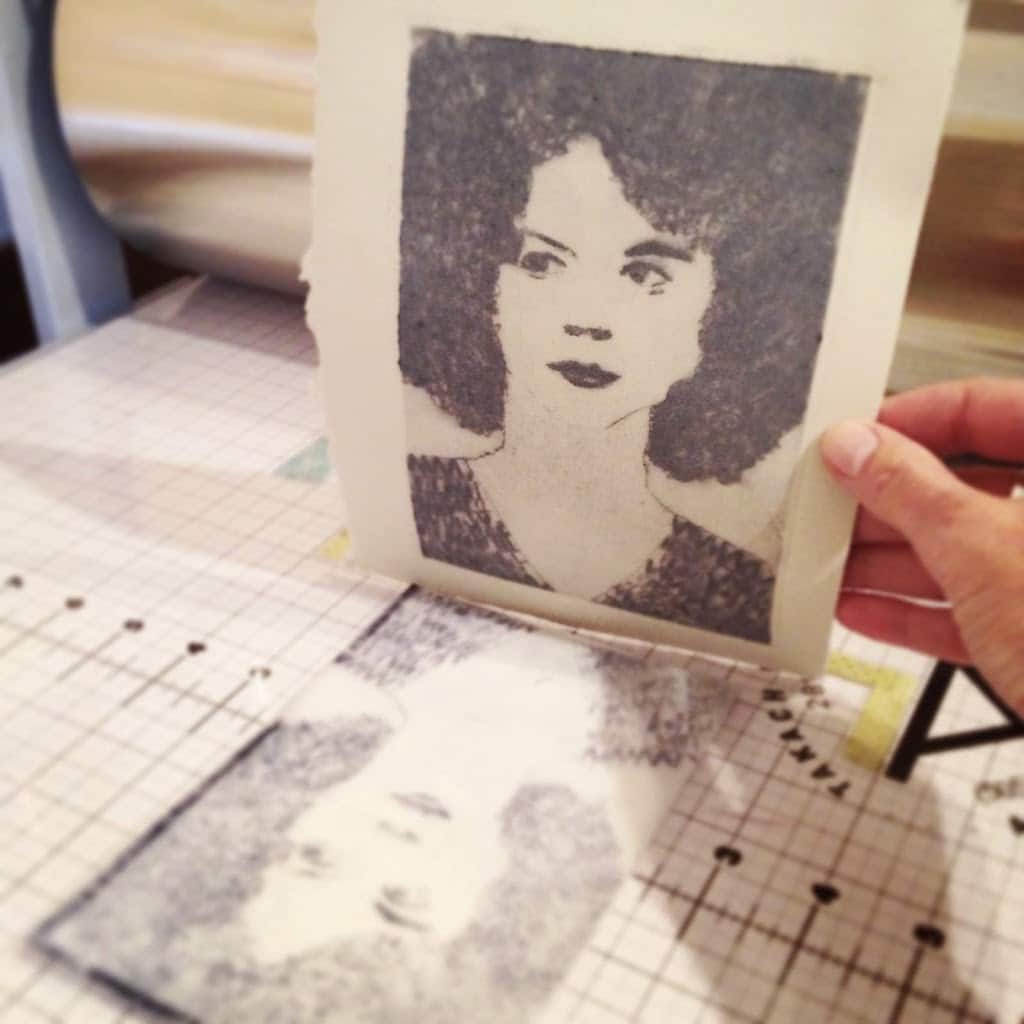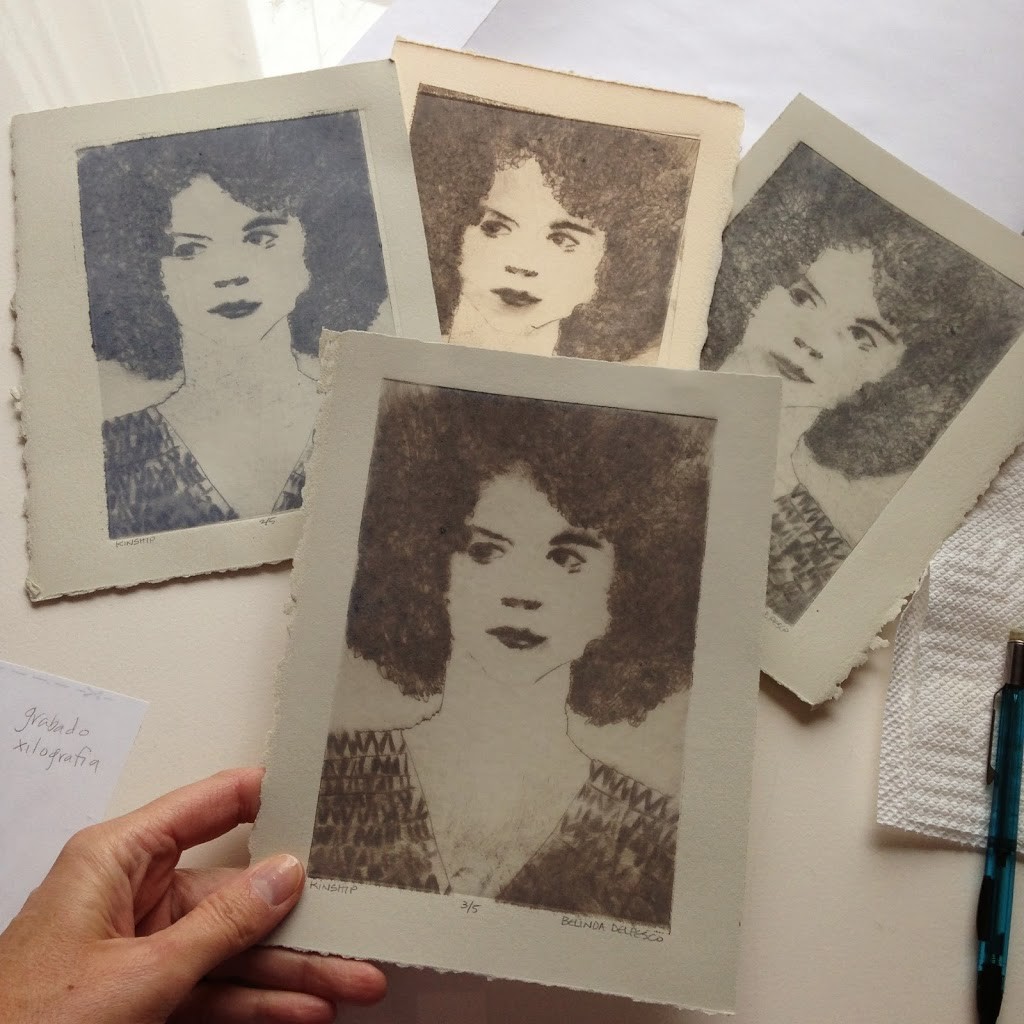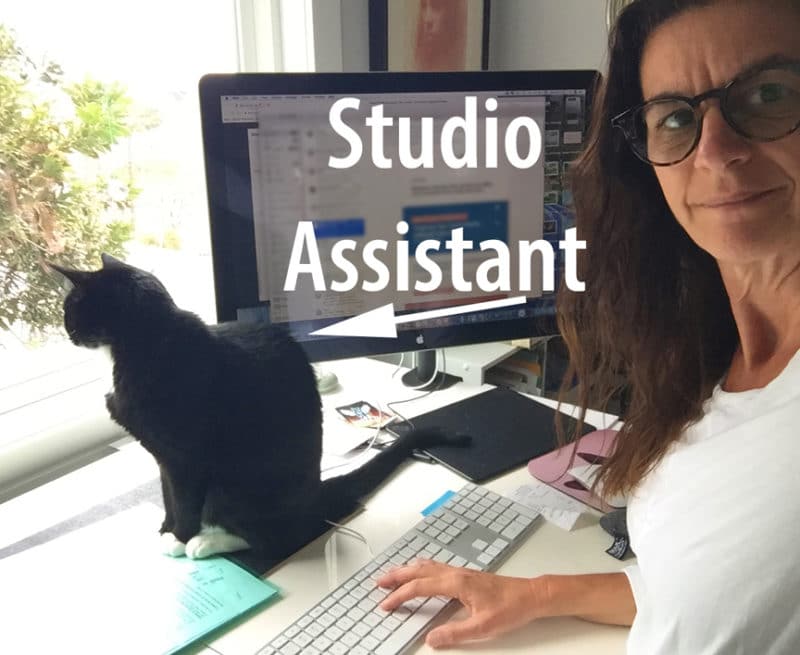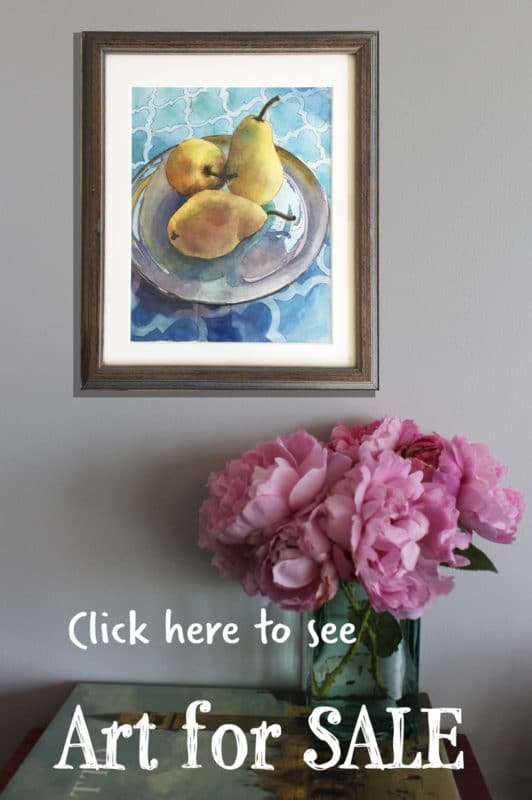Drypoint from Mylar
Several years ago, I read about an unnamed artist making drypoint engravings (sometimes referred to as drypoint etchings) from sheets of drafting film. Mylar, or drafting film, is used in architectural and commercial drafting. Drafting film looks like translucent plastic; it’s made from thin, flexible polyester sheets that are available in glossy and matte surfaces. Artists use the glossy version as an oil painting palette, or to make oil paint monotypes, and the matte version can be used like paper for drawing with colored pencil, pens, charcoal, marker and an assortment of other media.

Creating a Drypoint Engraving
I printed an edition of five drypoints from a single sheet of matte finish Dura-Lar brand drafting film. My drypoint was incised with a cork-handled scribe, and then inked with water-based printmaking inks, wiped with tarlatan cloth, and then pressed to BFK Rives printmaking paper on an etching press. If you’d like more details on the process, I’ve linked a drypoint demonstration video below.

Want to make a Drypoint?
A list of supplies with links is at the bottom of this post. If you give this wonderful printmaking process a go, please come back and share links to your work in the comments so we can all see your art-making adventures.


Available in my Etsy Shop
Art Quilts
There is a lovely article with inspiring images of Deborah Boschert’s art quilts in this month’s textile artist post. Read it here.
Drypoint from Cardboard
Leonie Conellan has another drypoint demo that includes using photoshop to capture your image and then creating a drypoint from the print-out on plain old cardboard. Check that out here.
Rembrandt’s Etchings
Christies posted a beautiful little video about Rembrandt’s etchings featuring printmaker Alexander Massouras. The artist describes the difference between etching (using acid to incise the plate) and drypoint (created with a sharp point – no acid). Watch that video here.

Online Marketing Course
The most frequent question I get – face to face and via email – is about marketing. If you’re one of the curious, let me know in the comments. I took a course on marketing four years ago. It was a game changer. The tornado of online marketing directives I harvested via searching on my own were finally, in this course, streamlined into a doable list, served in the right order, with instructions and strategies that made so much sense. (Here is one of their free instagram tip sheets.) I’ve attended every one of their live events, and I refer to my notes from the course every week. The same instructors are opening the course online again for a limited time (it sells out) in May. Are you interested?
I hope you’re acting on your creative urges, and working with your art supplies frequently. Thanks for stopping by and I’ll see you in the next post.
Happy creating,
Belinda
P.S. You can subscribe to get each new post via email by signing up here.
P.P.S. After *lots* of requests, I’ve added a small number of canvas wrap, square-format prints of watercolors to my etsy shop. Check those out here. Use coupon CODE15 during check out for 15% off your entire order. ?
Art Quote
In an era of electronic communication, it is often forgotten that in the last quarter of the nineteenth century, illustrated books and periodicals were the only vehicle for bringing images of the world into American homes. Weekly magazines with serialized stories generated the same anticipation as a favorite weekly television program. Books by important authors were greeted with the same excitement as major motion pictures. New productions were enthusiastically reviewed, and illustrations hung next to paintings in the nation’s most prestigious exhibitions. In the years following the civil war, it was not unusual for illustrators to enjoy financial success, widespread fame and a lifestyle of luxury…
~Alice Carter – Red Rose Girls: an Uncommon Story of Art and Love

How to make a Drypoint Engraving – or Etching
The video in this post is a printmaking demonstration of a drypoint engraving (or etching) created on drafting film (also known as Mylar or Dura-Lar). Here are some links to help you get started, and a list of the supplies you’ll need to make one of your own. 🙂
Here is a playlist of videos focused on drypoint printmaking: http://bit.ly/1D3Rrs9
This video shows how to make a drypoint on plexiglass, and includes some tips on wiping the plate: https://youtu.be/5GWAHsL7Yvw

Supplies to Make a Drypoint Etching – or Engraving
Check the links below for supplies so you can make a drypoint on mylar too:
- Drawing pencils http://amzn.to/1DgCVM7
- Dura-Lar (polyester drafting film as a plate alternative) #http://amzn.to/1urklAm
- Etching needle – Twisted Scribe (or Whistler’s Needle) https://amzn.to/2XdClhB
- tarlatan for wiping ink from the plate http://amzn.to/2iL4wBU
- Daubers or “dollies”: rolled strips of craft felt for ink application http://amzn.to/1iwGsLg (see this post for instructions to make a felt dauber to ink your plates)
- or you can use bristle paint brushes http://amzn.to/1fszmKa
- Matboard https://amzn.to/2ZbnJkC
- BFK rives printmaking paper (use this if you want to add other media, like watercolor, to your print) http://amzn.to/1yMFTtc
- Japanese kozo paper – use this if you plan to leave the inks untouched, with no other wet media added to the print) http://amzn.to/1C97v9I
- Watercolors http://amzn.to/1odkaWN
- Spatula for mixing/laying out ink http://amzn.to/1sevJsW
- Akua ink starter set: https://amzn.to/2ZcAjjE
- Akua Mag Mix (thickens ink): https://amzn.to/2Zbp0bo
- Rubber gloves http://amzn.to/1bNmWvu
- Apron http://amzn.to/1fWXkIh
- Takach etching press http://www.takachpress.com/etchtbl/index.htm
If you have any questions about the process, please leave them in the comment section, and I’ll do my best to answer them quickly! Happy printing!


Hi Belinda-
I have access to an etching press where I teach. I was interested in purchasing one for my studio. However the price and size of the one you recommend are prohibitive. I found the one linked here on Amazon. It is affordable but the reviews state it is a fail.
What do you think about making the purchase?
https://www.amazon.com/dp/B004WQGIJ0/ref=sspa_dk_detail_0?psc=1&pd_rd_i=B004WQGIJ0&pd_rd_w=RMFRA&pf_rd_p=8a8f3917-7900-4ce8-ad90-adf0d53c0985&pd_rd_wg=bCj2i&pf_rd_r=YTM4KH5KF957TG1S2KD3&pd_rd_r=c955bb79-62a7-11e9-94d4-49728df24266
Hi Alaiyo, I’ve never used that press, but just looking at the way it works, I wouldnt get it for my studio. There’s no press bed – nothing to lay your plate on, so it would take some fenageling to push a plate and paper through the rollers, while turning the crank, and stabilizing the whole assembly from jumping around from your earnest efforts.
Are you interested in working small to start? Do you know of the facebook group dedicated to using embossing machines (https://amzn.to/2GmEC3f) as presses? https://www.facebook.com/groups/1544918272204523/ Perhaps explore that as an option?
Thank you so much! I’ve been doing drypoint on sheets of acrylic, but my hands are really too old for that! This looks like it’s easier to make a mark.
I was working from an Akua starter set, but I broke down and bought an individual jar of Mars black, and it is soooo much softer than what I was working with. I hope this cuts down on some of my problems.
Hi Kirsten, If your hands get fatigued, try doing your line work with an electric engraver – like this one: https://amzn.to/2PlHKAn I’m glad your mars black made a difference in your printmaking. Was it Akua’s Mars Black, or a different manufacturer?
Hi Belinda, I am interested in the marketing course. Keep me posted. Have a great show in San Diego, we will see you soon!
Hi Sugar, I thought about you and Tony a lot while I reviewed the course updates for this year (you get lifetime access), and I’ll keep you informed as they open up their notification opt-in. Thanks for the good wishes. 🙂 ❌⭕️
Is oil based ink better than water based ink when making a drypoint print? Is it possible to use a barn instead of a press?
It depends on the ink. Some water-based inks dry really fast, and they wouldn’t work at all. They have to be Intaglio inks, so they stay wet – whether oil based or water based. ANd within each type of ink, there are modifiers to increase or slow drying time, or thicken or thin the ink. Do you already have some printmaking ink?
Marketing is so important and the most confusing…..Yes, I am interested about the marketing course. Thank you,.
Hi Gabriele – In the past, I’ve thought that artists weren’t meant to have marketing brains, but then I see hugely successful artists doing really well, and I realize that it’s ALL about their marketing skills, which can be learned like anything else. The trick is, I think, to get good instruction. The course I took was *amazing*. I couldn’t take notes fast enough. ? I’ll keep you posted.
Belinda, I am interested/curious about the marketing course. Will you let me know about it? Thanks! (And, love your posts, as always!!!)
Hi Marie, Yes, I’ll send you details when I get back from the San Diego Artwalk in 10 days. Here is my direct email address if you have questions about it: bdelpesco@mac.com And thanks for your news of the Bonnard article, and your compliments!
Dura-Lar sounds like a winner when it comes to storage. Or, can be easily tossed out if you don’t collect your engraved surfaces.
Hi Sally, I agree… there are plenty of sheets in a pad, and if you cut those down to smaller plates, tossing the Ooopsies in the trash is not as much of a loss as a plexiglass plate or a sheet of copper. And yes, storing them is easy. Each of my plates, and their matching sheet of matboard for use on the press goes into an envelope with reference materials, artists proofs, the the edition, etc. Easy-peasey!